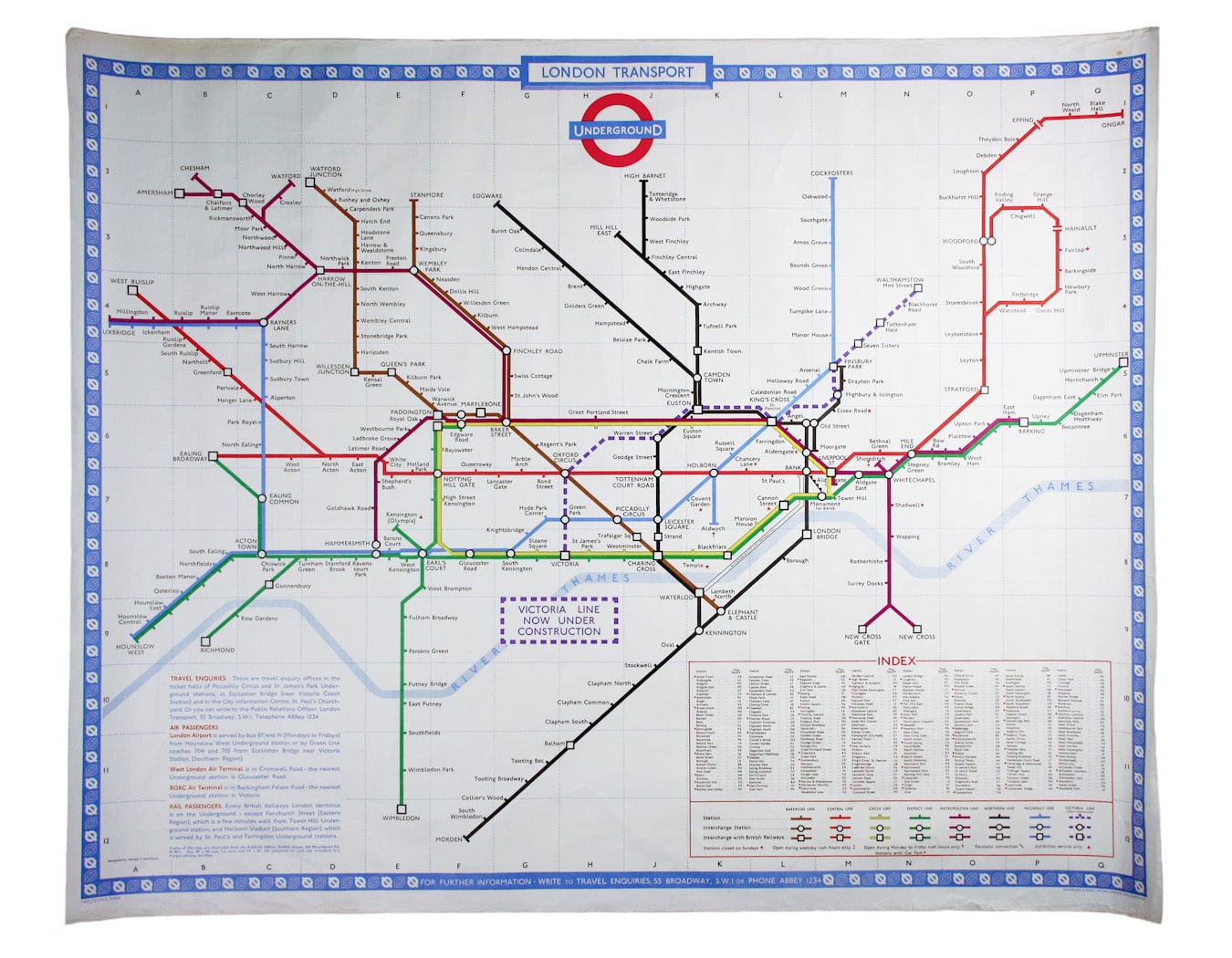
Hutchison’s 1962 Quad Royal Station Map
SKU: 8792
Title:
Hutchison’s 1962 Quad Royal Station Map
Date of publication:
Printed Measurement:
Publisher:
Colour:
Mapmaker:
The critics have not been kind to Harold Hutchison, and nor have we.
His design, which replaced Beck’s diagram, was unveiled to the public – and to Beck himself, who had no inkling that he had been replaced – in April 1960. This version has been adapted to show the route of the Victoria Line. Construction began in 1962, and the first section was opened to passengers in 1968. Read more
Hutchison was Publicity Officer of London Transport 1947-1966, and he came to believe that he could design a superior version of the diagram himself. Beck had overseen most iterations of the diagram for the best part of thirty years, and Hutchison’s tenure lasted for little more than three.
The absence of curves gives Hutchison’s design a somewhat jerky feel, and he made some unusual choices regarding spacing (e.g. the location of Great Portland Street) and splitting station names (e.g. Ald-gate, on either side of the line). However, he was permitted to use upper and lower case letters for the first time, making the names easier to read and adding emphasis to interchange stations, which were still capitalized. Beck’s golden rules, such as his insistence on 90 and 45 degree angles, were thrown out of the window.
Hutchison regarded later versions of Beck’s diagram as too abstract and sought to make his own map more relevant to what was going on above ground; for example, the northern branches of the Northern Line veer northwest rather than north. Hutchison’s successor, Paul Garbutt, chose to continue this policy rather than returning to Beck’s rectlinear format, and the map which replaced Beck’s certainly marks a significant phase in the public presentation of the Tube.
Condition & Materials
Quad royal station map, 101 x 126.5 cm, printed in colours, blank verso.
References
See, for example, Roberts: Underground Maps after Beck (2005), pp. 1922. Read less


